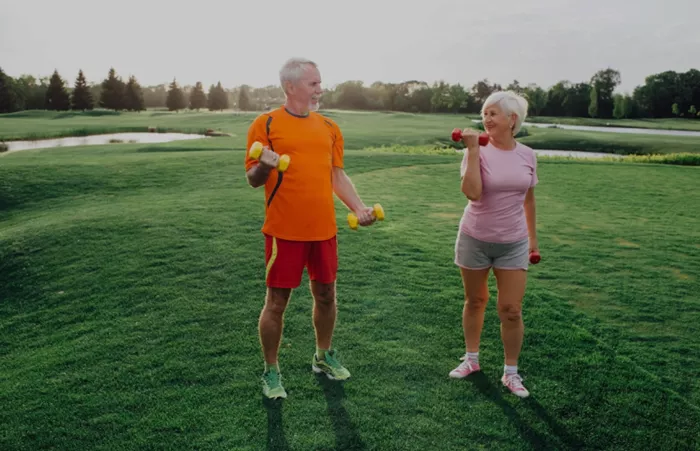A new analysis of existing research highlights that resistance or muscle-strengthening exercises, including weight training or bodyweight exercises, may be the most effective approach for alleviating insomnia in older adults. The study, published in Family Medicine and Community Health, also found that aerobic exercises and a mix of strength, balance, and flexibility routines are beneficial for improving sleep quality.
As people age, sleep quality tends to deteriorate, with up to 20% of older adults experiencing insomnia, according to the researchers. Poor sleep is linked to various health issues, cognitive decline, and increased absenteeism in the workplace, leading to a significant impact on daily life.
While previous studies have shown that exercise can reduce insomnia symptoms, uncertainty remains about which types of physical activity provide the most benefit. To address this gap, researchers analyzed clinical trials up to October 2022 that compared physical exercise with routine activities, usual care, or other non-exercise interventions in individuals diagnosed with insomnia. They used the Global Pittsburgh Sleep Quality Index (GPSQI) to measure improvements in sleep.
The exercises reviewed included aerobic activities such as swimming, cycling, and walking; resistance exercises like push-ups and weight training; balance exercises including heel-to-toe walking; flexibility routines like yoga and Pilates; and combination programs that incorporate multiple exercise types.
The analysis, which pooled data from 24 studies involving 2,045 adults aged 60 and older, found that most participants were from Asia, North America, South America, and Europe, with one in five studies conducted in nursing homes. Participants typically engaged in mild to moderate-intensity exercises for about 50 minutes per session, two to three times a week, with programs averaging 14 weeks in length.
While a variety of exercises were analyzed, only studies that focused on combination or aerobic exercises were included in the final data analysis due to the limited number of studies on other types of exercise.
The results revealed that combination exercise improved sleep quality by 2.35 points on the GPSQI scale, while aerobic exercise led to an improvement of 4.35 points. Notably, when analyzed through a network meta-analysis—a statistical method that examines both direct and indirect effects across treatments—resistance exercise emerged as the most effective, showing a 5.75-point improvement in sleep quality.
Aerobic exercise and combination routines also showed positive effects, with improvements of 3.76 and 2.54 points, respectively. Among non-exercise interventions, sleep education was identified as the most effective, though it still fell short of the benefits offered by muscle-strengthening exercises.
The researchers caution that the studies included in the analysis varied widely in design and methodology, with some lacking information on exercise intensity. Additionally, some exercises may be difficult for older adults with physical limitations. Despite these challenges, the authors conclude that strengthening exercises, especially resistance and aerobic activities, are effective in significantly improving sleep quality in older adults, offering a clinically meaningful benefit over normal daily activities.
Related topic:
Skin Organoids Show Promise in Scarless Frostbite Healing
Maternal Stress and Its Impact on Gut and Breastmilk Microbiota
The Risks of Mixing Medications and Supplements

